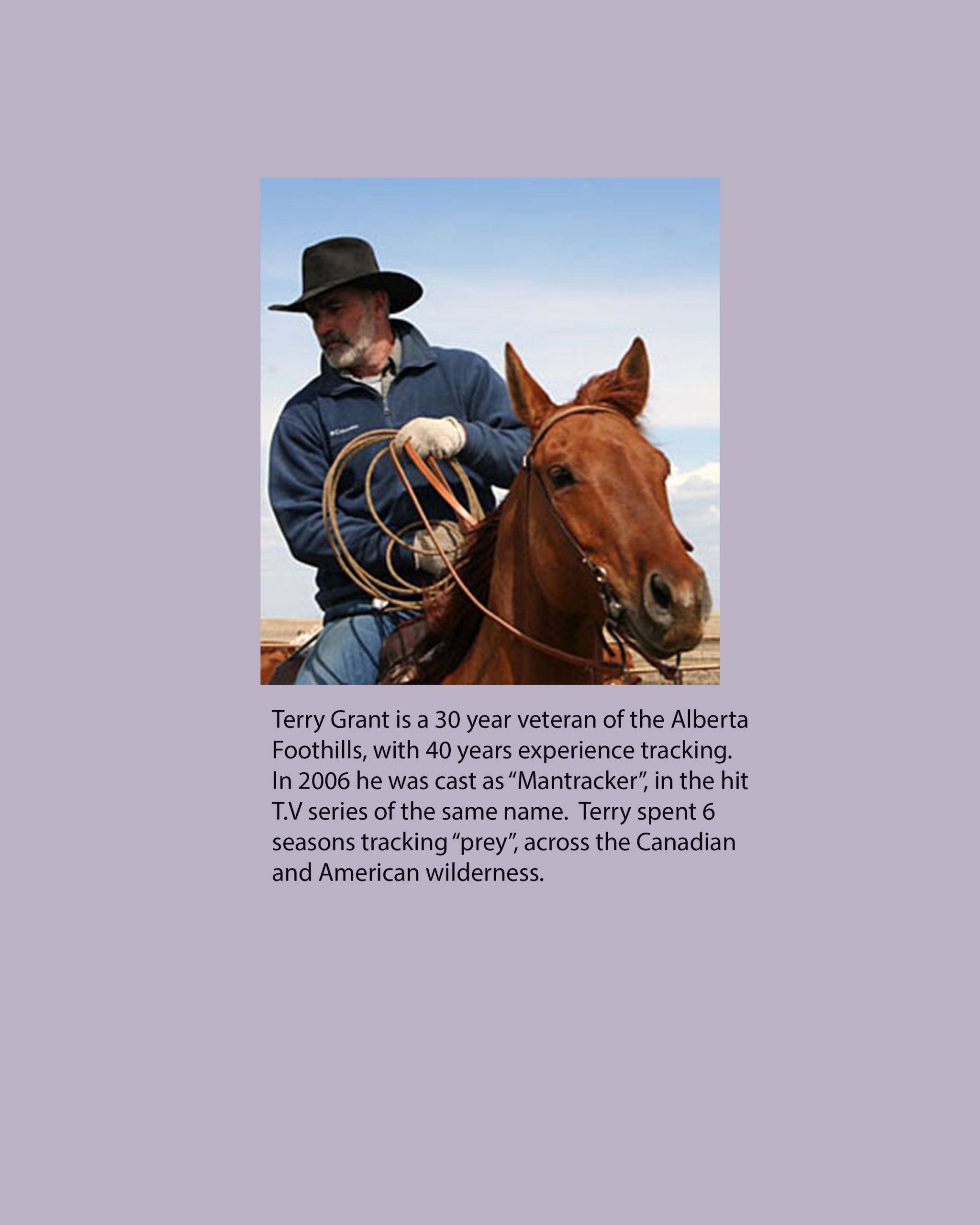Tales from the Trails by Terry Grant
I get asked a lot how I got into tracking and how I got the part of Mantracker. I didn’t find this out until Season Five, and it went something like this.
The producer had an idea for a show about two people on horseback chasing two people on foot. He went to the Toronto Sportsman Show, looking for someone that would fit the part.
He saw my cousin, Dewy Matthews, at his Anchor D Outfitting booth, and because he had known him previously while doing some work for Alberta Tourism, he asked him if he was interested in his idea. Dewy kinda laughed and said he didn’t know how to track people and was also too busy with his outfitting business, so he directed him to me, saying I was a cowboy and part of a search and rescue group.
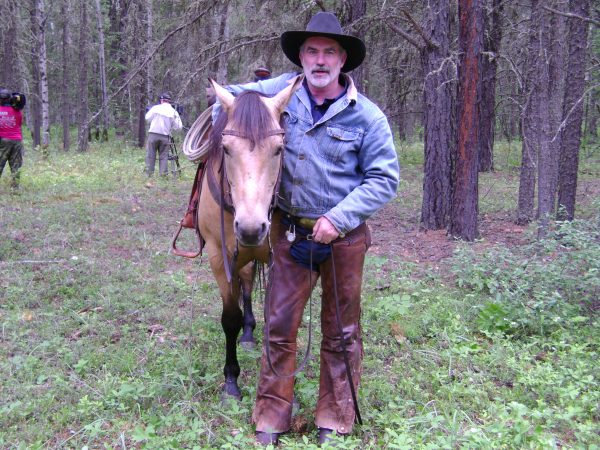
The producer contacted me and, a couple of weeks later, flew out to interview me. Near the end of the interview, he said, “Just ride your horse up and talk about a track.” So I put a track in the snow, got on my horse and rode away. I rode a big circle, and as I’m getting closer, I had no clue what to say. I stopped, got off my horse, got down on one knee and gently touched the track. As I looked up, I realized I had nothing.
At this point, my faithful old horse put her head over my shoulder as if to say, “Whatcha lookin’ at?” I looked her in the eye and said, ” Horse, looks like we’ve got company.”
The producer said, five years later, ‘at that point, you had the part.’ So it was actually my horse that got me the part.
Growing up, I was always fascinated by tracks. Later as I started working as a cowboy, tracking became a second nature. On a horse, it’s easier to see the tracks due to the height advantage.
Riding alone in the hills, one has to be aware of their surroundings, and tracks help tell you what’s in front of you or what has passed your way.
While filming the show, Mantracker, I had the pleasure and privilege to track people all over Canada, the Yukon, and several states, including Hawaii.
Tracking people can sometimes be as frustrating as eating soup with a fork. Animals normally have a pattern that varies slightly, unlike humans who really have no pattern whatsoever when in the bush.
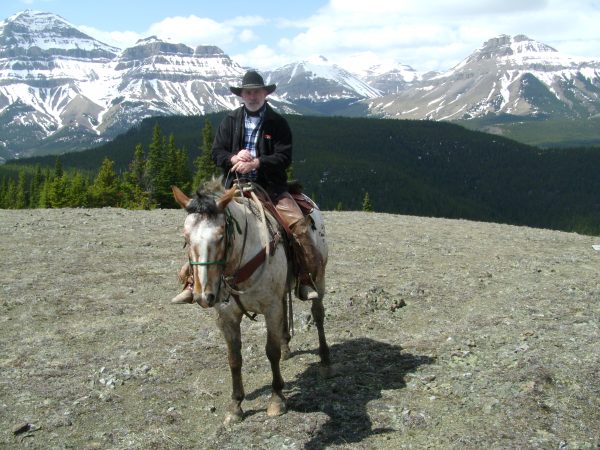
One pair of super-smart humans thought it would be a good idea to circle and get behind the trackers. This did not turn out so well due to the fact that they got a 1.5-hour head start, so upon circling, they actually came out of the thick underbrush about 50 feet in front of me! So much for their head start.
They were also the same pair that, upon seeing the trail on the map, decided to take a shortcut. They made a big loop up and to the left, and after making several big circles in the bush, the cameraman finally showed them on his GPS the path they had taken over the last hour. Upon reaching the trail again, they were surprised to see human footprints on the trail in front of them. Yup, it was their own tracks; they came out of the bush about 10 yards from where they went in an hour ago.
It really pays to stay on the trail. In search and rescue, most of the lost hikers get lost because they took a shortcut.
Tracking in Hawaii was amazing; we were on the Big Island on the south side near Pahala. We were tracking on the Kapapala Ranch [established 1883]. My guide was Leon, who worked on the Kapapala for 26 years, so he really knew the country. It was amazing riding around there; it’s so different. For example, the guava plants; you’d try to break a limb about the size of your thumb, and it was impossible; they’re so strong. “Yeah, you don’t ride through that,” Leon said.
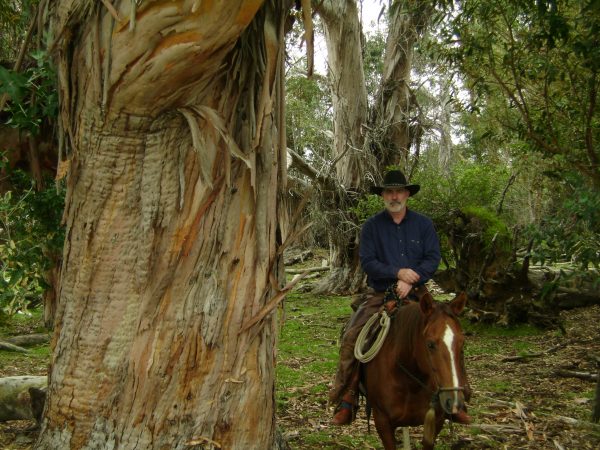
During the track, we rode by some lava flows, and they were perfectly smooth. “That must have been recent,” I said to Leon. “Pretty recent,” he said. “They’re only about 150 years old.”
And I will mention some of the horses. I rode 26 different horses, and like I tell some folks, sometimes I had the cream of the crop, and sometimes I had the fertilizer. At the start of every show, I’m on a big, brown mare, one of the best horses I rode, and she was just a big, beautiful, marvelous horse; well trained, good for anything you want to do. It was the first show we did — “Julio & Joe” when I rode this mare. She was amazing and absolutely fearless, except for one thing.
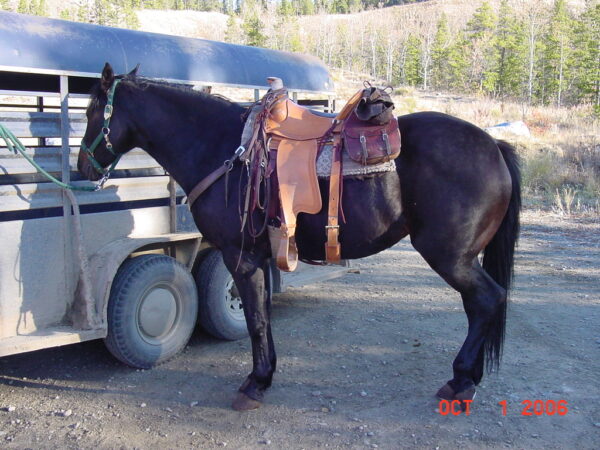
At about 10:00 a.m., we came on a set of railroad tracks, and it took me a good half hour to get her to cross those tracks. She would go through mud, water, step over logs, do everything perfect, but she was scared spitless of train tracks. It took me a big 30 minutes to get her to step over those tracks. It was a good thing I took the time because, after that, we rode hundreds of miles along the tracks, over the tracks, beside the tracks — she dang near got good enough to walk on the railroad ties — and boy, could she cover ground at a walk. Her name was Kluane, but I called her Puddin’ because the first day I saddled her up, everything jiggled. She was a little bit heavy, but easily one of the top horses I rode.
In closing, the best advice I can give if you’re heading into the bush or unfamiliar territory is to learn to read a map and compass. GPS is a great tool to use in conjunction with a map and compass. But if you rely only on your GPS, be sure to pack a bunch of extra batteries!
Tracking is a lost art, and every track will tell you a story. It’s up to you to figure out what the track is telling you.
Until next time, get outdoors and look at some new country, but do it safely — and leave plenty of tracks.
